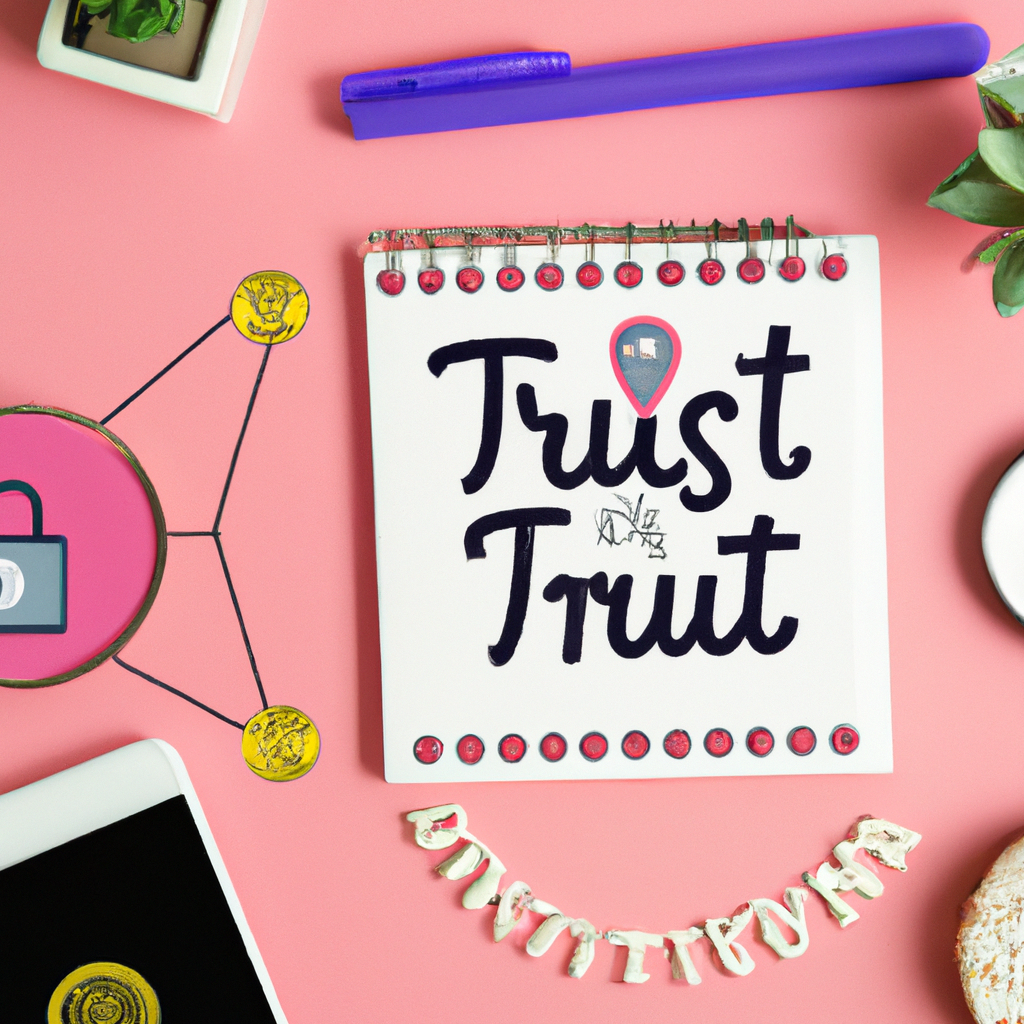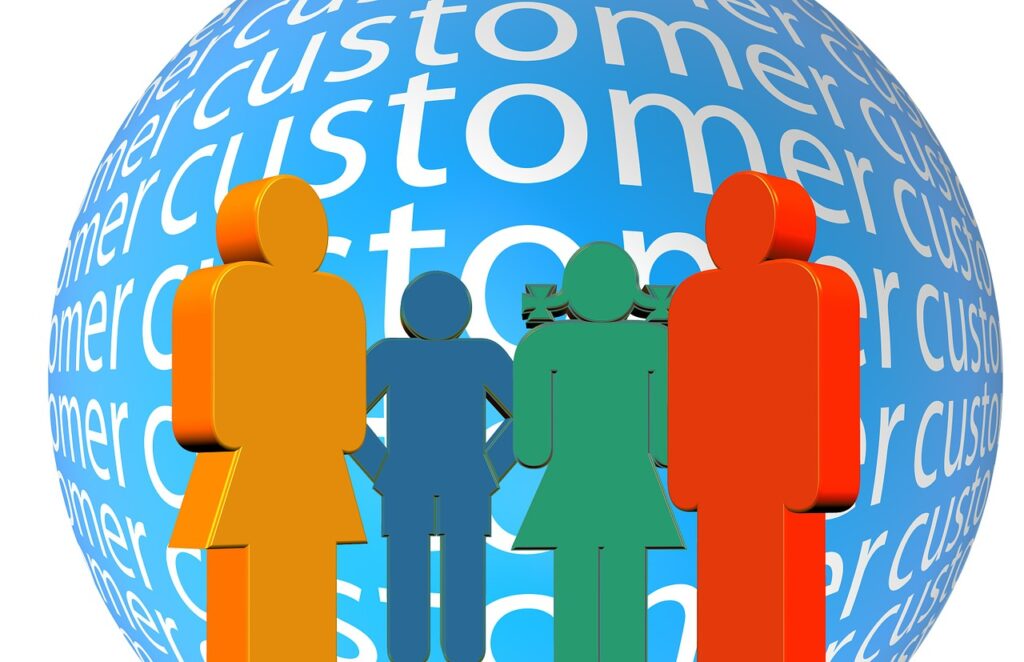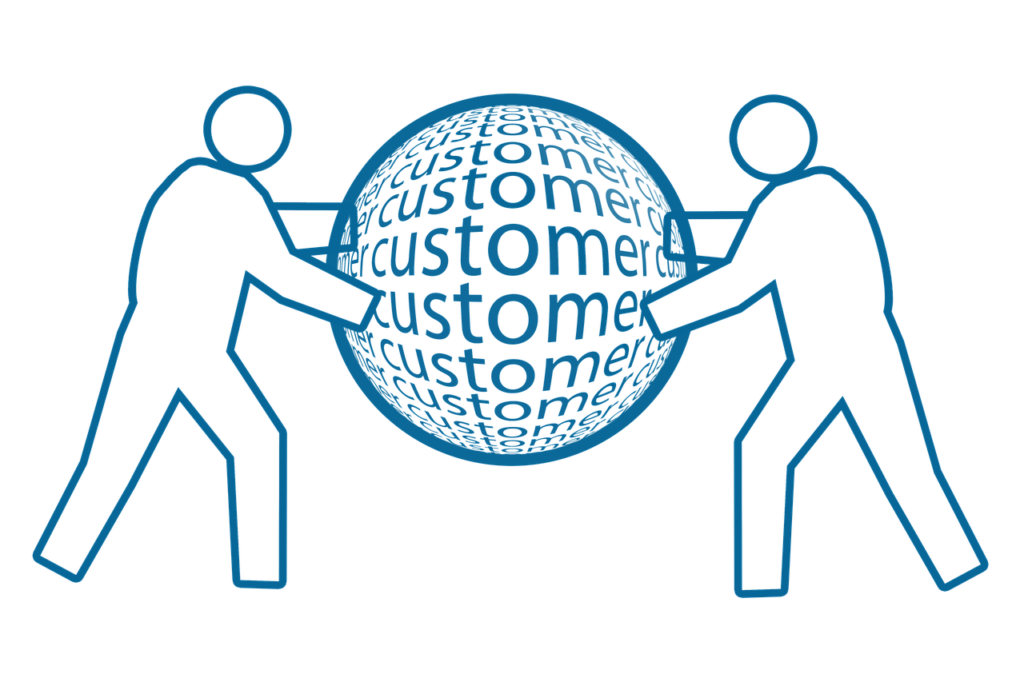In this article, we will explore effective strategies for building and maintaining strong customer relationships in the field of marketing. We all know that creating a solid connection with your customers is vital for the success of any business. Whether you are a seasoned marketer or just starting out, understanding the importance of building these relationships and knowing how to maintain them is key. By implementing the right techniques and fostering genuine connections with your customers, you can enhance brand loyalty, increase customer retention, and drive long-term success. Let’s dive into the world of customer relationship building and discover the essential tips and tricks that will help you strengthen your marketing efforts.
Understanding Customer Relationship Management
Defining customer relationship management
Customer Relationship Management (CRM) refers to the strategies, processes, and technologies businesses use to manage and nurture their relationships with customers. It involves understanding customers’ needs and preferences, providing excellent customer service, and personalizing the customer experience, all with the goal of building trust and long-term customer loyalty.
Importance of customer relationship management
Customer relationship management is crucial for businesses in today’s highly competitive market. By building strong and meaningful relationships with customers, businesses can enhance customer satisfaction, increase customer loyalty, and drive repeat business. CRM also allows businesses to gather valuable customer data, which can be used to develop targeted marketing strategies and improve overall business performance.
Building Strong Customer Relationships
Understanding customer needs and preferences
To build strong customer relationships, it is essential to understand the needs and preferences of your customers. This can be achieved through market research, customer surveys, and analyzing customer feedback. By understanding what your customers want and need from your products or services, you can tailor your offerings to meet their expectations and provide a personalized experience.
Providing excellent customer service
Excellent customer service is the cornerstone of building strong customer relationships. This involves providing timely and efficient support, addressing customer inquiries and concerns, and going above and beyond to exceed customer expectations. By delivering exceptional customer service, you not only foster loyalty but also create positive word-of-mouth, which can attract new customers to your business.
Personalizing the customer experience
Personalization is a key component of effective customer relationship management. Customers appreciate businesses that understand their unique preferences and tailor their experiences accordingly. By utilizing customer data, businesses can personalize marketing messages, create customized product recommendations, and provide personalized offers and promotions. This level of personalization not only enhances the customer experience but also strengthens the relationship between the customer and the brand.
Building trust and transparency
Trust and transparency are essential for developing strong customer relationships. Customers want to feel confident that they can trust a business with their personal information and rely on the company to deliver on its promises. Building trust involves demonstrating integrity, being transparent in your business practices, and delivering consistently high-quality products and services. By building trust with your customers, you can foster long-term loyalty and ensure customer satisfaction.

Utilizing Communication Channels
Choosing the right communication channels
Choosing the right communication channels is crucial for effective customer relationship management. Different customers have different communication preferences, so it is important to offer a variety of channels through which customers can reach out to your business. This may include phone support, email, live chat, or social media platforms. By providing multiple communication channels, you make it easier for customers to engage with your business and receive prompt assistance.
Utilizing social media platforms
Social media platforms have become integral communication channels for businesses to connect with their customers. Platforms such as Facebook, Instagram, Twitter, and LinkedIn allow businesses to interact with customers, showcase products or services, provide updates, and respond to inquiries and feedback. Social media also provides opportunities for businesses to engage in conversations, build brand awareness, and foster a sense of community among their customer base.
Implementing email marketing strategies
Email marketing is a powerful tool for maintaining customer relationships. By capturing customer email addresses and obtaining consent, businesses can send targeted and personalized marketing messages directly to the customer’s inbox. Email marketing allows businesses to provide valuable content, inform customers about new products or promotions, and nurture leads. By crafting compelling and relevant email campaigns, businesses can strengthen their relationship with customers and drive repeat business.
Using live chat and chatbots
Live chat and chatbots are emerging communication tools that can greatly enhance the customer experience. Live chat allows customers to have real-time conversations with a representative, resolving queries and concerns promptly. Chatbots, on the other hand, use artificial intelligence to provide automated assistance. By implementing these tools, businesses can offer instant support, improve response times, and enhance customer satisfaction.
Developing Customer Loyalty Programs
Introduction to customer loyalty programs
Customer loyalty programs are designed to reward and incentivize customers for their continued loyalty and support. These programs encourage customers to make repeat purchases and engage with the brand on a deeper level. Loyalty programs can take various forms, such as point systems, exclusive discounts, VIP perks, or tiered reward systems. By implementing a loyalty program, businesses can cultivate stronger relationships with their customers and increase customer retention.
Creating rewards and incentives
The success of a customer loyalty program lies in the rewards and incentives offered to customers. Rewards can range from discounts and freebies to access to exclusive events or early product releases. It is important to offer rewards that are relevant to your target audience and align with your business objectives. By providing enticing rewards, customers will feel motivated to continue engaging with your brand and remain loyal over time.
Implementing tiered loyalty systems
Tiered loyalty systems are an effective way to encourage customers to increase their engagement with the brand. By offering different levels of rewards and benefits based on customer loyalty, businesses can incentivize customers to reach higher tiers. This creates a sense of achievement and exclusivity for customers, motivating them to stay committed to the brand. Tiered loyalty systems also allow businesses to identify and reward their most loyal and valuable customers.
Tracking and analyzing customer data
To optimize customer loyalty programs, it is important to track and analyze customer data. This data can provide valuable insights into customer behavior, preferences, and engagement levels, allowing businesses to tailor their loyalty programs to better meet customer needs. By tracking and analyzing customer data, businesses can identify trends, measure the effectiveness of their loyalty initiatives, and make data-driven decisions to continuously improve their customer relationship management efforts.

Managing Feedback and Reviews
Encouraging customer feedback
Encouraging customer feedback is essential for understanding customer satisfaction levels and identifying areas for improvement. Businesses can actively solicit feedback through surveys, feedback forms, or customer reviews. By making it easy for customers to provide feedback, businesses can gain insights into their customers’ experiences, opinions, and suggestions. This feedback can then be used to make strategic improvements to products, services, or overall customer service.
Utilizing online review platforms
Online review platforms, such as Yelp, Google Reviews, or Trustpilot, can significantly impact a business’s reputation and customer relationships. It is important for businesses to actively monitor and manage their online reviews, both positive and negative. Positive reviews contribute to building trust and attracting new customers, while negative reviews provide opportunities for businesses to address concerns, resolve issues, and demonstrate their commitment to customer satisfaction.
Monitoring and responding to reviews
Monitoring and responding to customer reviews is crucial for effective customer relationship management. It shows that you value customer feedback and are committed to addressing any concerns or issues that may arise. By promptly responding to reviews, whether positive or negative, businesses can demonstrate their attentiveness, empathy, and willingness to rectify any negative experiences. This level of responsiveness builds trust, shows accountability, and can turn dissatisfied customers into loyal brand advocates.
Addressing customer concerns and complaints
Addressing customer concerns and complaints is a vital part of maintaining strong customer relationships. Whenever a customer raises a concern or files a complaint, it is important to address it promptly and empathetically. Listening to customer grievances and offering solutions demonstrates that you value their opinions and are committed to their satisfaction. By effectively addressing customer concerns and resolving issues, businesses can turn potentially negative experiences into positive ones and strengthen customer trust.
Effective Customer Relationship Management Tools
Overview of CRM software
CRM software is a valuable tool for managing customer relationships effectively. It provides businesses with a centralized platform to store, organize and analyze customer data, track customer interactions, and manage customer communications. CRM software allows businesses to streamline their customer management processes, improve customer service, and enhance overall business performance. It also enables businesses to develop targeted marketing campaigns based on customer insights and behavior.
Choosing the right CRM tool for your business
Choosing the right CRM tool for your business is crucial to ensure efficient customer relationship management. When selecting a CRM tool, consider your business’s specific needs, size, budget, and desired features. Look for a CRM solution that offers robust data management capabilities, integration options with other business tools, user-friendly interfaces, and excellent customer support. Evaluating multiple options and seeking recommendations can help you find the CRM tool that best suits your business requirements.
Implementing CRM systems effectively
Implementing CRM systems effectively involves careful planning, proper training, and ongoing support. It is important to establish clear goals and objectives for CRM implementation, communicate these objectives to your team, and provide the necessary training to ensure everyone understands how to use the CRM system effectively. Ongoing support and regular system updates are also essential to optimize CRM usage and ensure the system continues to meet your business needs.
Benefits of using CRM in marketing
Using CRM in marketing offers numerous benefits for businesses. CRM software allows businesses to segment their customer database, enabling targeted marketing campaigns. By analyzing customer data, businesses can gain valuable insights into customer behavior, preferences, and purchasing patterns, allowing for personalized and relevant marketing strategies. CRM also provides tracking and reporting capabilities, allowing businesses to measure the success of their marketing efforts and make data-driven decisions to improve campaign performance.

Measuring and Tracking Customer Relationships
Determining key metrics and performance indicators
Measuring and tracking customer relationships requires the identification of key metrics and performance indicators. These metrics may include customer satisfaction scores, customer retention rates, average purchase frequency, or customer lifetime value. By monitoring and analyzing these metrics, businesses can gauge the effectiveness of their customer relationship management efforts and make informed decisions to improve customer relationships.
Utilizing customer surveys and feedback forms
Customer surveys and feedback forms are valuable tools for measuring customer satisfaction and engagement. They provide businesses with direct insights into customer experiences, perceptions, and preferences. By regularly collecting customer feedback, businesses can identify areas for improvement and adapt their strategies to better meet customer expectations. Surveys and feedback forms can be administered through various channels, such as email, social media, or website pop-ups.
Analyzing customer behavior and engagement
Analyzing customer behavior and engagement allows businesses to understand how customers interact with their brand and products. By tracking customer interactions and behavior, such as website visits, product views, or purchase history, businesses can gain valuable insights into customer preferences and interests. This data can then be used to develop targeted marketing campaigns, personalized recommendations, and customer retention strategies.
Tracking customer lifetime value
Tracking customer lifetime value (CLV) is crucial for understanding the long-term value each customer brings to your business. CLV takes into account the total revenue a customer generates over their entire relationship with your business. By tracking CLV, businesses can identify their most valuable customers, provide tailored services or rewards, and allocate marketing resources effectively. Tracking CLV also helps businesses identify opportunities for upselling or cross-selling, further enhancing customer relationships and profitability.
Improving Customer Relationships through Personalization
Utilizing customer data for personalization
Customer data is a powerful resource for personalizing the customer experience. By leveraging customer data, such as purchase history, demographic information, or preferences, businesses can tailor their marketing messages, promotions, and product recommendations to individual customers. Personalization enhances the customer experience, making customers feel valued and understood by the brand.
Implementing personalized marketing campaigns
Implementing personalized marketing campaigns involves crafting targeted messages that resonate with individual customers. By leveraging customer data, businesses can create tailored marketing campaigns that address customers’ specific needs, preferences, and pain points. Personalized marketing campaigns can be delivered through various channels, such as email, social media, or website personalization. The goal is to provide customers with relevant and timely information that drives engagement and conversions.
Creating customized product recommendations
Customized product recommendations are an effective way to enhance the customer experience and drive sales. By analyzing customer purchase history and browsing behavior, businesses can suggest relevant and complementary products to customers. These recommendations can be provided through personalized emails, on-site pop-ups, or as part of a loyalty program. By offering customized product recommendations, businesses can increase customer satisfaction, encourage repeat purchases, and drive cross-selling opportunities.
Using dynamic content and personalization tools
Dynamic content and personalization tools allow businesses to create unique experiences for individual customers. By dynamically adjusting website content, email templates, or advertising materials based on customer data, businesses can deliver highly relevant and personalized messages. These tools take into account factors such as demographic information, past behavior, or location to create a personalized experience that resonates with each customer. Using dynamic content and personalization tools can significantly improve customer engagement and strengthen relationships.

Handling Customer Relationship Challenges
Dealing with customer churn
Customer churn refers to the loss of customers or the discontinuation of their relationship with a business. To reduce customer churn, businesses must identify the reasons for customer attrition and take proactive measures to address them. This can involve conducting exit surveys, offering personalized retention offers or incentives, or improving customer service. By adopting a customer-centric approach and continuously monitoring customer satisfaction, businesses can minimize customer churn and maintain strong customer relationships.
Recovering customer relationships
Recovering customer relationships requires proactive efforts to address issues and rebuild trust. If a customer has had a negative experience or expressed dissatisfaction, it is crucial to respond promptly, empathetically, and take immediate steps to resolve the issue. This may involve apologizing for any mistakes, offering compensations or refunds, and providing exceptional customer service moving forward. By demonstrating commitment to customer satisfaction, businesses can salvage and even strengthen customer relationships.
Handling customer complaints
Handling customer complaints effectively is essential for maintaining strong customer relationships. When a customer raises a complaint, it is crucial to listen attentively, show empathy, and take responsibility for any shortcomings. Promptly address the complaint, investigate the issue, and communicate the steps being taken to resolve it. Regularly updating the customer on the progress and ensuring a satisfactory resolution can help rebuild customer trust and loyalty.
Dealing with negative feedback
Negative feedback can provide valuable opportunities for improvement and growth. Instead of dismissing or ignoring negative feedback, businesses should view it as a chance to learn and improve. Responding to negative feedback promptly and professionally demonstrates a commitment to customer satisfaction and shows that their opinions are valued. By addressing concerns, rectifying mistakes, and taking steps to prevent similar issues in the future, businesses can turn negative feedback into positive outcomes.
Continuous Relationship Maintenance
Providing ongoing customer support
Providing ongoing customer support is essential for maintaining strong customer relationships. Businesses should offer multiple channels for customers to seek assistance, such as phone support, email, live chat, or self-service knowledge bases. Timely and helpful customer support contributes to customer satisfaction, builds trust, and ensures that customers remain loyal to the brand.
Staying in touch with customers
Staying in touch with customers is an effective way to nurture relationships and maintain top-of-mind awareness. Regular and personalized communications, such as newsletters, product updates, or special offers, keep customers engaged and informed about your business. By proactively reaching out to customers and staying in touch, businesses can strengthen relationships, encourage repeat business, and create a loyal customer community.
Upselling and cross-selling strategies
Upselling and cross-selling strategies are effective techniques for increasing customer value and promoting customer loyalty. By analyzing customer data and identifying opportunities, businesses can recommend complementary or upgraded products to customers. Upselling encourages customers to purchase a higher-priced product within the same product category, while cross-selling suggests related or additional products that enhance the customer’s experience. Successful upselling and cross-selling strategies can boost revenue and deepen customer relationships.
Fostering long-term partnerships
Fostering long-term partnerships with strategic customers is an important aspect of customer relationship management. By identifying key customers who have the potential for long-term collaboration, businesses can develop tailored strategies to nurture these relationships. This may involve offering exclusive benefits, personalized account management, or co-creating solutions to address specific customer needs. Building long-term partnerships enhances customer loyalty, strengthens business relationships, and drives mutual success.
In conclusion, building and maintaining strong customer relationships is crucial for businesses seeking long-term success. By understanding customer needs and preferences, providing excellent customer service, personalizing the customer experience, and building trust, businesses can cultivate loyal and satisfied customers. Utilizing effective communication channels, implementing customer loyalty programs, managing feedback, and utilizing CRM tools are key strategies for nurturing customer relationships. Measuring and tracking customer relationships, improving personalization, handling customer relationship challenges, and continuously maintaining relationships are essential components of successful customer relationship management. Through a customer-centric approach, businesses can enhance customer satisfaction, drive repeat business, and foster long-term partnerships.












